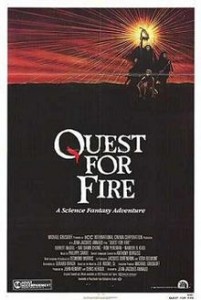Our concept of the universe is only as good as the instruments that we have to measure it.
There is a wonderful closing scene in the 1981 French movie “Quest For Fire” where the hero, Naoh (fittingly a word-play on the Biblical Noah), a pre-historic caveman tribal leader, is sitting atop a hill with his very pregnant “mate” by his side contemplating the moon. The moon is large and full, a reflection, in a way, of his mate’s condition. You can see in his eyes that he is attempting to process what he sees in the sky. It is as if he wants to merely reach up and touch it, but of course he realizes (and we know for fact) he cannot. But he does not know the moon is 239,000 miles from Earth and that men will not step foot on the moon until 1969 AD. He also has no concept of years or space technology. All he knows is that this large, bright thing that appears in the night sky, that changes shape over time (more or less a month as we now know to calculate it) is there, and is in the night sky with regularity. Perhaps he has a name for it, but he does not know what this object in the sky is.
Try to imagine pre-historic man as he looks around his environment and attempts to make sense of his world. What instruments does he have to work with? Certainly no Internet, Hubble telescope, microscope, slide rule, computer, or Hadron Collider. All he has to get a measure of his world is his senses. He defines his world with his sense of sight, hearing, smell, touch, and taste. In whatever language he has developed (depending on what part of the globe he has been born into or traveled to), his world is what he sees, hears, smells, touches, and tastes.
In our contemporary terms sitting in the early part of the 21st century, it is a limited perspective. The caveman’s world view, his perspective of his universe, is limited to his senses. His perspective is that the universe is as far as he can travel—and for the most part he does not travel far from where he was born.
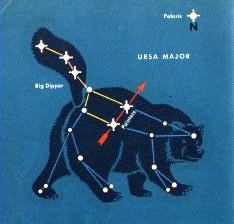 Of course, there’s more to the story because we now know from various sources that early man traveled out of Africa to what is now known as Europe, the Middle East, Asia, and the Americas. But even then man’s world view was essentially that the world was flat and that the Earth was the center of the universe. The earth is still. The sun—a bright object in the sky that rises in what became known as the east and sets in the west—provides heat and light. It revolves around the earth. The many bright points of light in the night sky that appear after the sun sets are where Gods reside. These same points of light in the night sky form patterns remindful of animals on earth, but also of Gods. Early man’s explanation for the unknowable are “spirits” and “Gods.” In the absence of provable facts, people make things up. A comforting explanation is better than no explanation at all.
Of course, there’s more to the story because we now know from various sources that early man traveled out of Africa to what is now known as Europe, the Middle East, Asia, and the Americas. But even then man’s world view was essentially that the world was flat and that the Earth was the center of the universe. The earth is still. The sun—a bright object in the sky that rises in what became known as the east and sets in the west—provides heat and light. It revolves around the earth. The many bright points of light in the night sky that appear after the sun sets are where Gods reside. These same points of light in the night sky form patterns remindful of animals on earth, but also of Gods. Early man’s explanation for the unknowable are “spirits” and “Gods.” In the absence of provable facts, people make things up. A comforting explanation is better than no explanation at all.
But then one of two things happen: an instrument of measurement is created, or someone’s observations of nature and/or human behavior results in anomalous conclusions that are ultimately accepted—but only after much resistance. In turn, man’s world view changes.
Thomas Kuhn’s The Structure of Scientific Revolutions (University of Chicago Press, 1970) states the case neatly. In this work scientific historian Kuhn points out that scientific revolutions evolve through several stages. First, the scientific community agrees on established paradigms. However, in time, anomalous observations to the established paradigms occur. These anomalies throw the scientific community into crisis. In time, the persistence of the anomalies evolve a new paradigm. This new paradigm, in turn, impacts our world view, or, in the context of this blog, our concept of the universe. This is a pattern repeated over and over again.
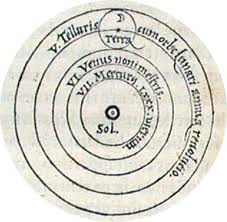 For example, from early pre-historic man, to the ancient Egyptians, up until the Middle Ages man’s world view of the universe was that the world was flat. It took Galileo in support of Copernicus to make the case that the world was not the center of the universe—that the sun did not revolve around the earth, that, in fact, the earth revolved around the sun. This was the so-called “heliocentrism” view vs. the “geocentrism” world view. He could not have come to this observable conclusion without the aid of the technology of the telescope—a technology of measurement; an instrument he helped improve. Of course, his conclusions appeared to criticize the then Roman Catholic Pope, Pope Urban. His conclusions also appeared to upend the prevailing “scientific” paradigm of the day: how could the Earth not be the center of the universe, as God has decreed, and the Roman Catholic Church supports?
For example, from early pre-historic man, to the ancient Egyptians, up until the Middle Ages man’s world view of the universe was that the world was flat. It took Galileo in support of Copernicus to make the case that the world was not the center of the universe—that the sun did not revolve around the earth, that, in fact, the earth revolved around the sun. This was the so-called “heliocentrism” view vs. the “geocentrism” world view. He could not have come to this observable conclusion without the aid of the technology of the telescope—a technology of measurement; an instrument he helped improve. Of course, his conclusions appeared to criticize the then Roman Catholic Pope, Pope Urban. His conclusions also appeared to upend the prevailing “scientific” paradigm of the day: how could the Earth not be the center of the universe, as God has decreed, and the Roman Catholic Church supports?
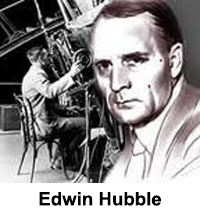 Fast forward to the early 20th century. Astronomer Edwin Hubble, using now an even more powerful telescope in 1929, comes to a startling conclusion: the Milky Way is not the only galaxy in the universe; there are billions of galaxies in the universe. Moreover, the universe is not static. Galaxies are moving away from each other in an accelerating fashion. Reversing this observation leads to the development of the “Big Bang” theory—at some time about 13.7 billion years ago all the matter in the universe was condensed into a singularity that exploded. The result: the expanding universe we observe today. Moreover, in billions of years into the future, instead of a brighter night sky (the one observed by the hero in “Quest For Fire”), the sky will be darker, perhaps very dark. Because the universe is expanding at an accelerating rate, and galaxies are moving away from us, light from the other side of the universe will never reach us. The rate of expansion is greater than the speed of light.
Fast forward to the early 20th century. Astronomer Edwin Hubble, using now an even more powerful telescope in 1929, comes to a startling conclusion: the Milky Way is not the only galaxy in the universe; there are billions of galaxies in the universe. Moreover, the universe is not static. Galaxies are moving away from each other in an accelerating fashion. Reversing this observation leads to the development of the “Big Bang” theory—at some time about 13.7 billion years ago all the matter in the universe was condensed into a singularity that exploded. The result: the expanding universe we observe today. Moreover, in billions of years into the future, instead of a brighter night sky (the one observed by the hero in “Quest For Fire”), the sky will be darker, perhaps very dark. Because the universe is expanding at an accelerating rate, and galaxies are moving away from us, light from the other side of the universe will never reach us. The rate of expansion is greater than the speed of light.
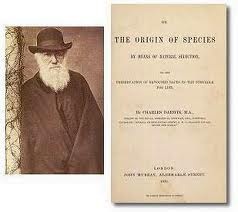 It was also a revelation that light has a speed: 186,262 miles per second, or 700 million miles an hour. This is a fact provable by many experiments in the 20th century. In the 17th century scientists perceived that light did not have a speed at all. It just was. The perspective on Man’s very existence paralleled this view. We just came into existence from the hand of God. Of course, Darwin, after many years of research and 15 years of writing The Origin of Species (1859) upended that perspective. That scientific view is still finding resistance in parts of the world where people are afraid to confront the possibility that “God”– who created the heaven and the earth according to the Bible–does not exist.
It was also a revelation that light has a speed: 186,262 miles per second, or 700 million miles an hour. This is a fact provable by many experiments in the 20th century. In the 17th century scientists perceived that light did not have a speed at all. It just was. The perspective on Man’s very existence paralleled this view. We just came into existence from the hand of God. Of course, Darwin, after many years of research and 15 years of writing The Origin of Species (1859) upended that perspective. That scientific view is still finding resistance in parts of the world where people are afraid to confront the possibility that “God”– who created the heaven and the earth according to the Bible–does not exist.
Today scientists are wrestling with concepts of multiple parallel universes, string theory, and theoretical “God” particles at the sub, sub-atomic level. It was not that long ago that scientists were completely unaware of microbes and bacteria un-viewable with the naked eye, but very observable with sophisticated microscopes, even run-of-the-mill microscopes.
Over thousands of years our concept of the universe has moved from a small, flat world, underscored by Euclidian geometry, to a heliocentric view, to a non-static view of our Milky Way galaxy and the universe itself. It stands to reason that we have not reached the end of the line of scientific discovery and that our perspective of our universe may yet evolve again as our instruments of measurement become even more sophisticated and reach deeper into space.
Please write to me at meiienterprises@aol.com if you have any comments on this or any other of my blogs.
Eugene Marlow, Ph.D.
October 29, 2012
© Eugene Marlow 2012


